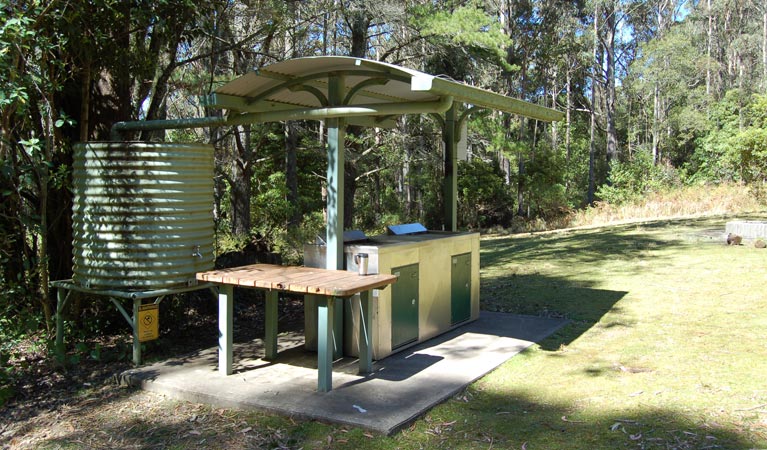Youngville campground
Mount Royal National Park
Overview
Camp at Youngville campground to access the World Heritage rainforests of Mount Royal National Park over a few days. Follow walking tracks from here.
| Camping type | Tent, Don't mind a short walk to tent |
|---|---|
| Facilities | Picnic tables, barbecue facilities, carpark, toilets |
| What to bring | Drinking water, cooking water |
| Bookings | Book up to 12 people or 2 sites online. |
| Group bookings | This campground is not suitable for group bookings. |
| Please note |
|
Explore Mount Royal at your leisure by camping at Youngville campground. Start off with a barbecue breakfast then hike a different walking track into this World Heritage area each day, with a picnic lunch packed to enjoy at a scenic lookout on Pieries Peak or down at Carrow Brook.
Staying overnight at Youngville campground gives you the chance to see some of the park’s many nocturnal birds and animals. So bring along your head torch and have a walk around your campsite after dinner to spot bandicoots, possums and gliders. The powerful, sooty, masked and barking owls – all proficient hunters – will probably see you before you see them. Look out at dusk and dawn for grazing pademelons and the threatened parma wallaby.
Map
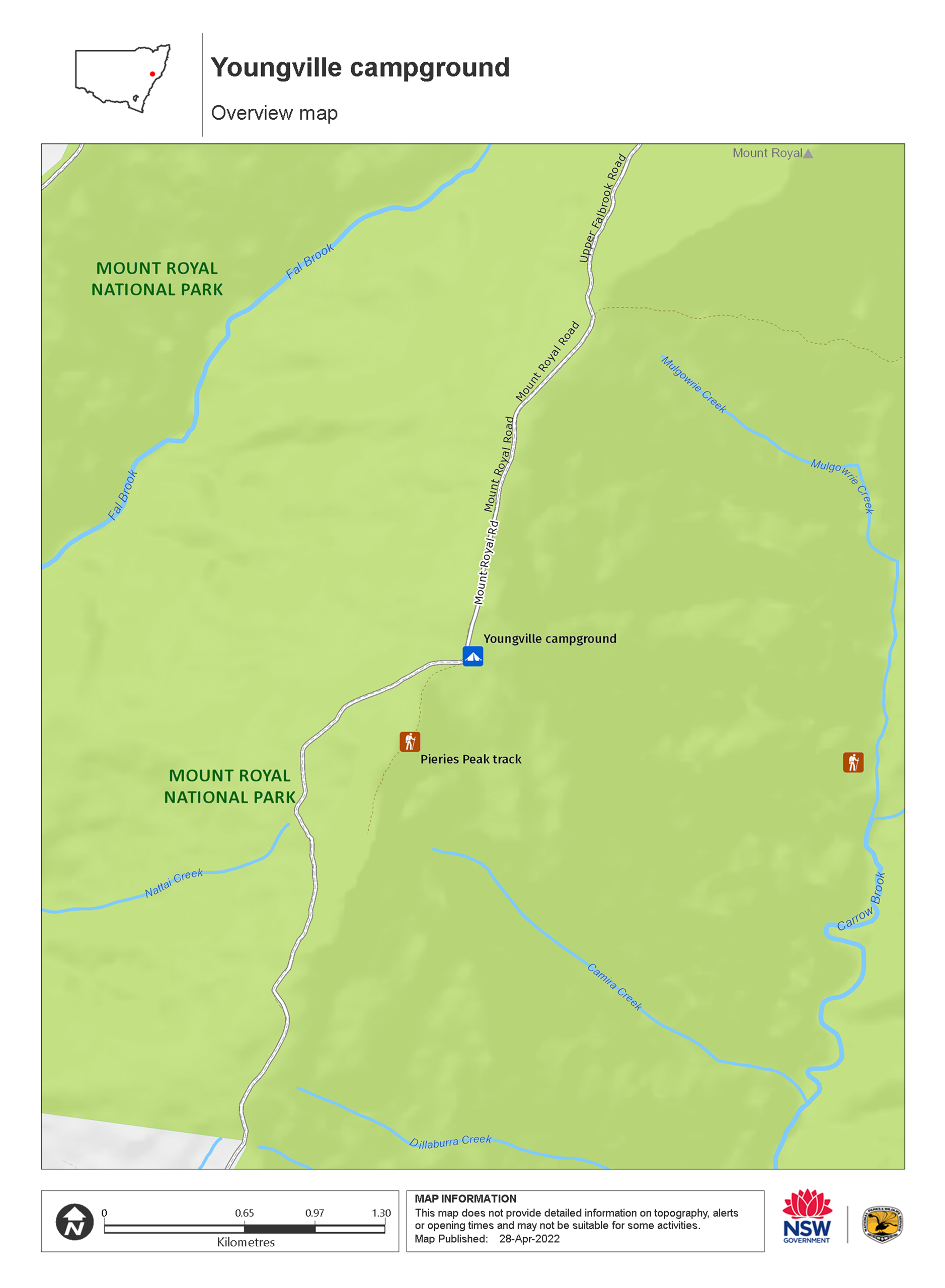
Map legend

Local alerts
For the latest updates on fires, closures and other alerts in this area, see https://uat.nswparks.cloud/camping-and-accommodation/campgrounds/youngville-campground/local-alerts
Bookings
- National Parks Contact Centre
- 7am to 7pm daily
- 1300 072 757 (13000 PARKS) for the cost of a local call within Australia excluding mobiles
- parks.info@environment.nsw.gov.au
Operated by
- Bulga office
- Monday to Friday, 9.30am to 4pm.
- 02 6574 5555
- npws.wollemiyengo@environment.nsw.gov.au
- 2156 Putty Road, Bulga NSW 2330
Park info
- in Mount Royal National Park in the North Coast and Country NSW regions
Mount Royal National Park is always open but may have to close at times due to poor weather or fire danger.
Visitor info
All the practical information you need to know about Youngville campground.
Maps and downloads
Learn more
Youngville campground is in Mount Royal National Park. Here are just some of the reasons why this park is special:
An important cultural place
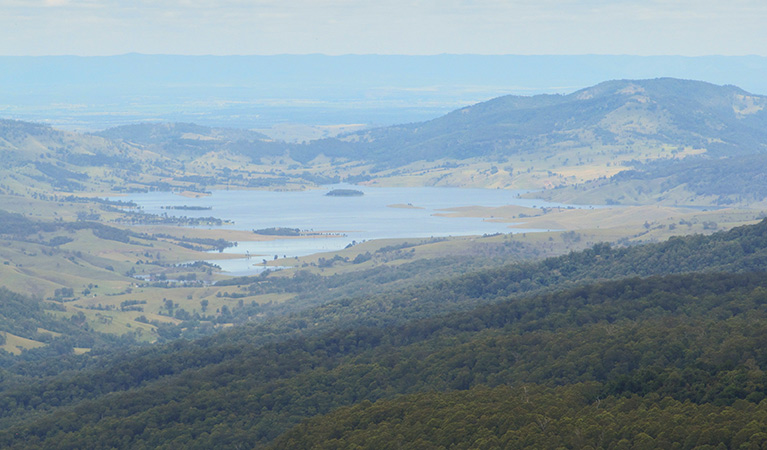
The area now covered by Mount Royal National Park, Barrington Tops National Park and Barrington Tops State Conservation Area is the traditional land of the Biripi, Worimi, Geawegal, Wonaruah and Ungooroo People. Although these people were dispossessed of their land after European settlement of New South Wales, they continue to have a deep attachment to the country and an active interest in its management. This place contains important foods, medicinal plants, animal species and sacred sites.
Safe haven
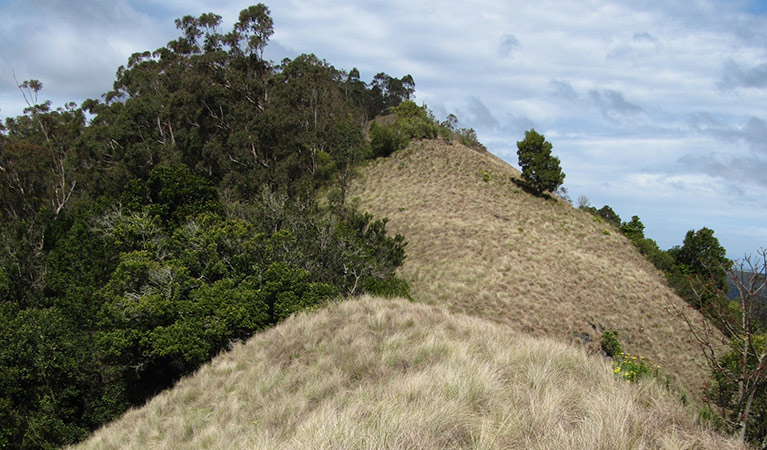
The rich diversity of vegetation offers habitat for a wide range of birds and animals, many of which are rare and threatened. These include: the endangered hastings river mouse; the threatened parma wallaby (described by British naturalist John Gould way back in 1840 as 'shy' and 'cryptic'; and the vulnerable spotted-tailed quoll, which is the largest marsupial carnivore on mainland Australia. The old growth forest is also habitat for four large forest owls - masked, barking, powerful and sooty - all of which are threatened species. Mount Royal National Park has a variety of forest types and vegetation communities, ranging from shrubland to tall open forest and wet eucalypt forest. The most dominant form of vegetation is mid-altitude grassy forest with plentiful stands of New England blackbutt, Sydney blue gum and grey gum.
- Carrow Brook walking track Carrow Brook walking track is a remote walk into the valleys of Mount Royal National Park, near Singleton. A challenging loop hike, it’s best suited to fit, experienced bushwalkers.
Same as always
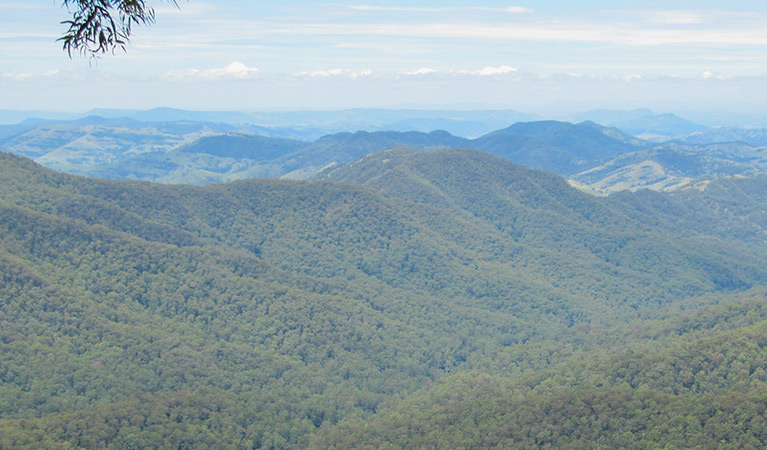
Mount Royal National Park is listed as part of the Gondwana Rainforests of Australia. Formerly known as the Central Eastern Rainforest Reserves, these include the most extensive areas of subtropical rainforest in the world, large areas of warm temperate rainforests and nearly all of the Antarctic beech cool temperate rainforest. Few places on earth contain so many plants and animals that remain relatively unchanged from their ancestors in fossil records.
The changing face
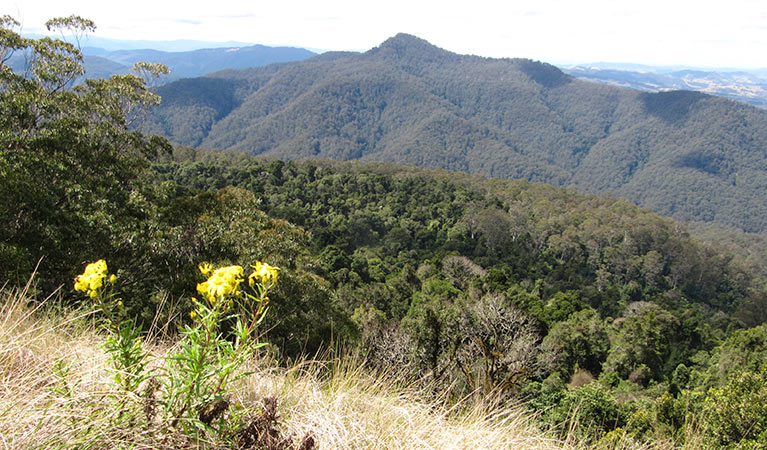
After government surveyors explored this area in the very early 1800s, the land soon became mined for gold, logged for its timber and used to graze lifestock. Small settlements established themselves on the plateau, mainly due to these agricultural opportunities. From the early 1900s, however, the area became increasingly popular for recreation and for scientific expeditions.

